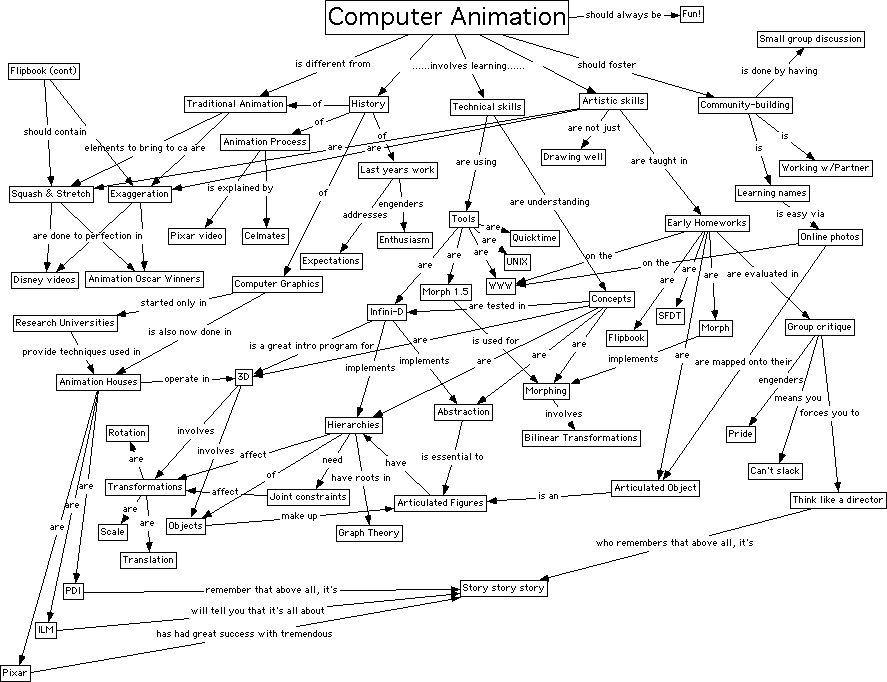Inferring 3D from 2D projections
Easily one of the hardest things for students is orienting themselves in the virtual 3D world by simply looking through several (top / front / side) orthogonal projections. Many many students just position their characters to look good from one camera position, but sometimes their body parts aren't even connected! They appear connected through just the perspective camera window, and they ignore the fact that the objects just aren't properly connected in the other windows. This can be attributed to a lack of understanding of the concept of 3D - in their mind, the camera is just a way to look at a 2D world, so if it looks good on the camera, it must be ok. They're oblivious to the fact that this static character can never move (because the arm isn't even connected!).
There are also some subtle differences between zooming (changing the focal length) and dollying (moving the virtual camera) that students always misunderstand. This is due to the fact that small modifications can achieve roughly the same effect. However, when they want to bring the character closer, they often simply choose the zoom control (because in their mind they want to zoom closer when in reality they want to move closer) and zoom in, completely distorting the perspective. A lack of experience with photography can also be to blame. Folks who own a SLR with a zoom lens almost never have confusion here.

